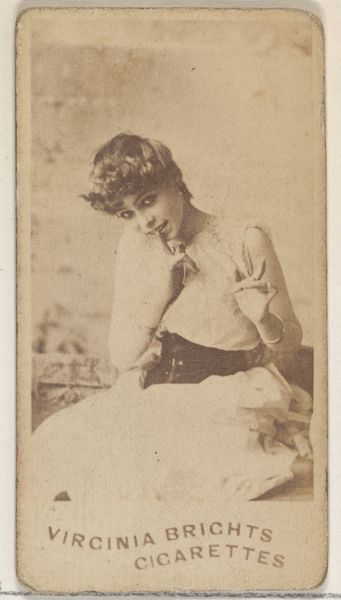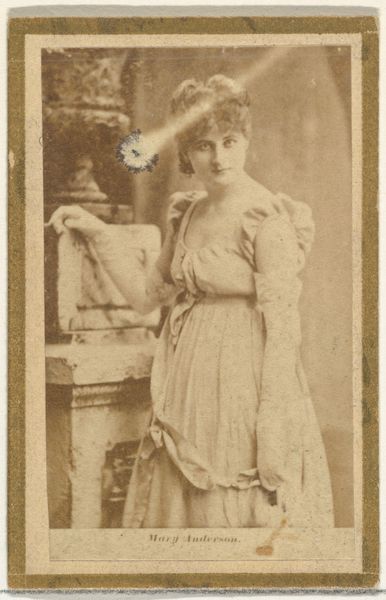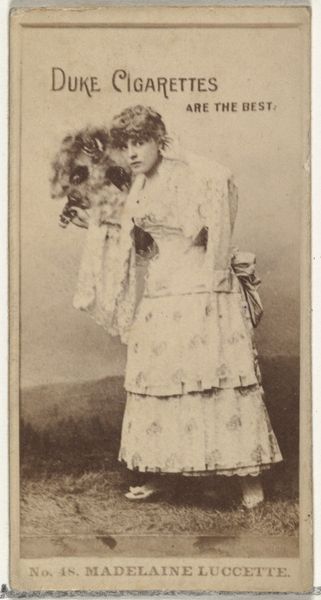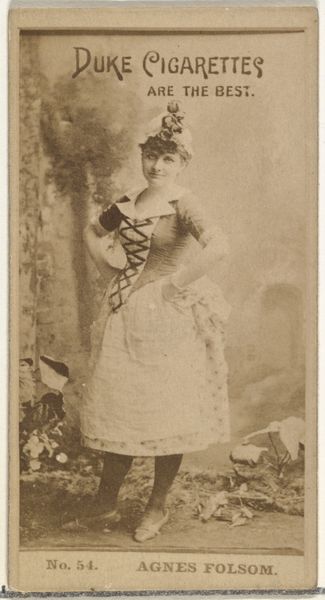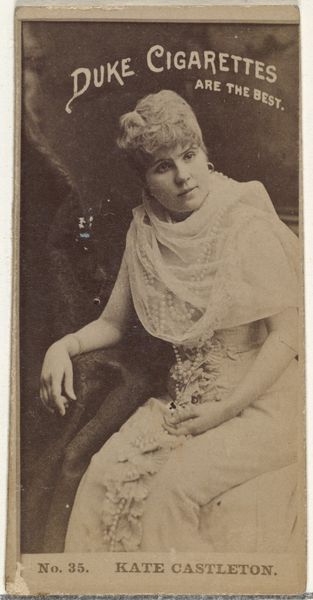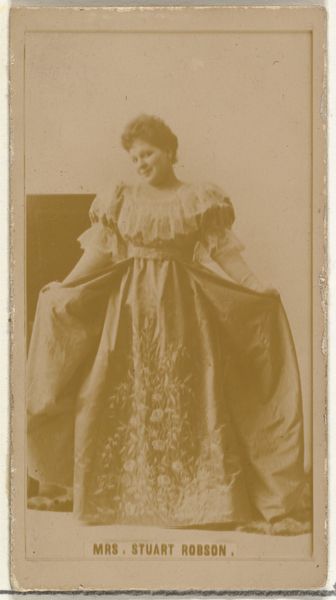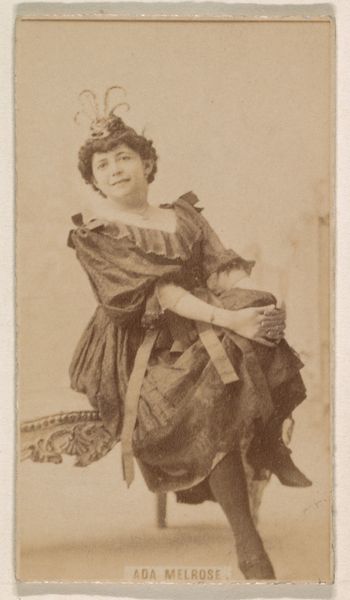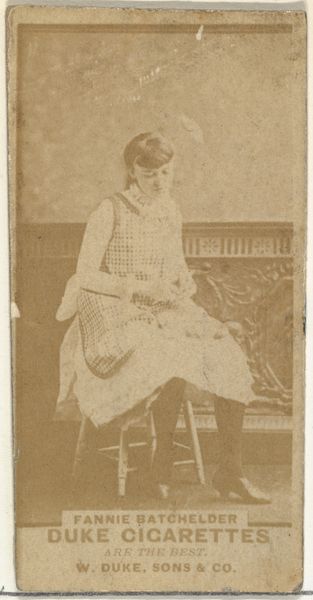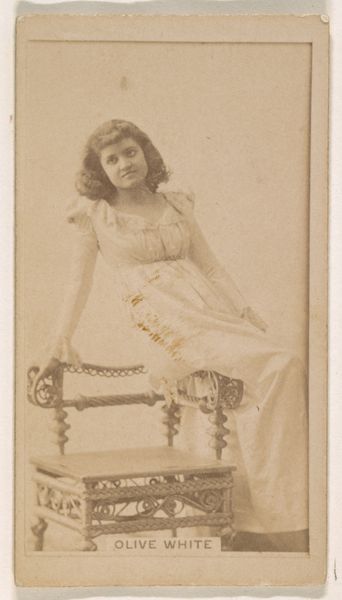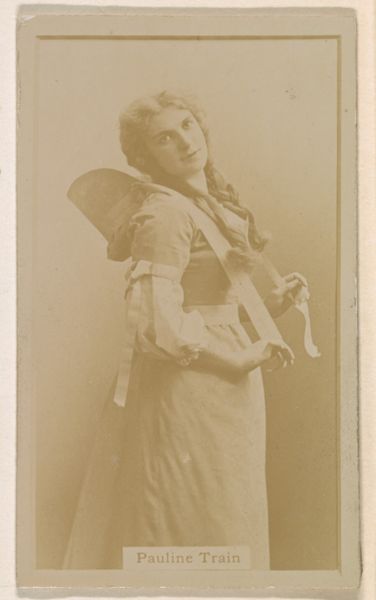
Lillian Kennedy, from the Actors and Actresses series (N145-8) issued by Duke Sons & Co. to promote Duke Cigarettes 1890 - 1895
0:00
0:00
drawing, print, photography, collotype
#
portrait
#
drawing
#
still-life-photography
# print
#
photography
#
collotype
Dimensions: Sheet: 2 11/16 × 1 3/8 in. (6.8 × 3.5 cm)
Copyright: Public Domain
Curator: Let's turn our attention to this striking image of Lillian Kennedy, taken between 1890 and 1895. It’s part of the "Actors and Actresses" series by W. Duke, Sons & Co., a fascinating example of how tobacco companies used collotype prints to promote their Duke Cigarettes. Editor: Wow, she and that dog have the same expression—a perfect, posed serenity! The tones give it a dreamy quality, like a faded memory. Is it just me, or is there a slight awkwardness in the way she's leaning against the table? Curator: That perceived awkwardness speaks volumes, actually. These images were strategically designed to create aspirational fantasies around consumption. Kennedy, as an actress, embodies a certain accessible ideal of beauty, and her association with the product links it to celebrity culture. It's carefully constructed social engineering. Editor: Social engineering with sepia tones! I love that! Thinking about her— Lillian. She probably had no say in it, right? Was her likeness just… taken? And printed, distributed in cigarette packs… Curator: These deals were mutually beneficial. Kennedy’s visibility increased, hopefully leading to broader recognition and roles. But you're right to question the power dynamics. The commodification of female beauty, particularly in service of industries like tobacco, raises complex feminist questions about agency and representation. Editor: Agency is a big word for a tiny photograph on a cigarette card. Though thinking about her now—about the real woman behind the sepia screen — I feel… protective. As though someone is missing from the story. All this talk about social engineering leaves me wanting her real story. Curator: Precisely. This tension—between the staged image and the hidden lives of the subjects—invites critical reflection. Considering race, gender, and class in these portraits is critical to understand these broader patterns of consumption and representation. Editor: Makes you want to dig deeper, doesn't it? It’s not just a pretty face selling cigarettes—it’s a tiny window into a complex, messy world of image-making and self-invention.
Comments
No comments
Be the first to comment and join the conversation on the ultimate creative platform.
